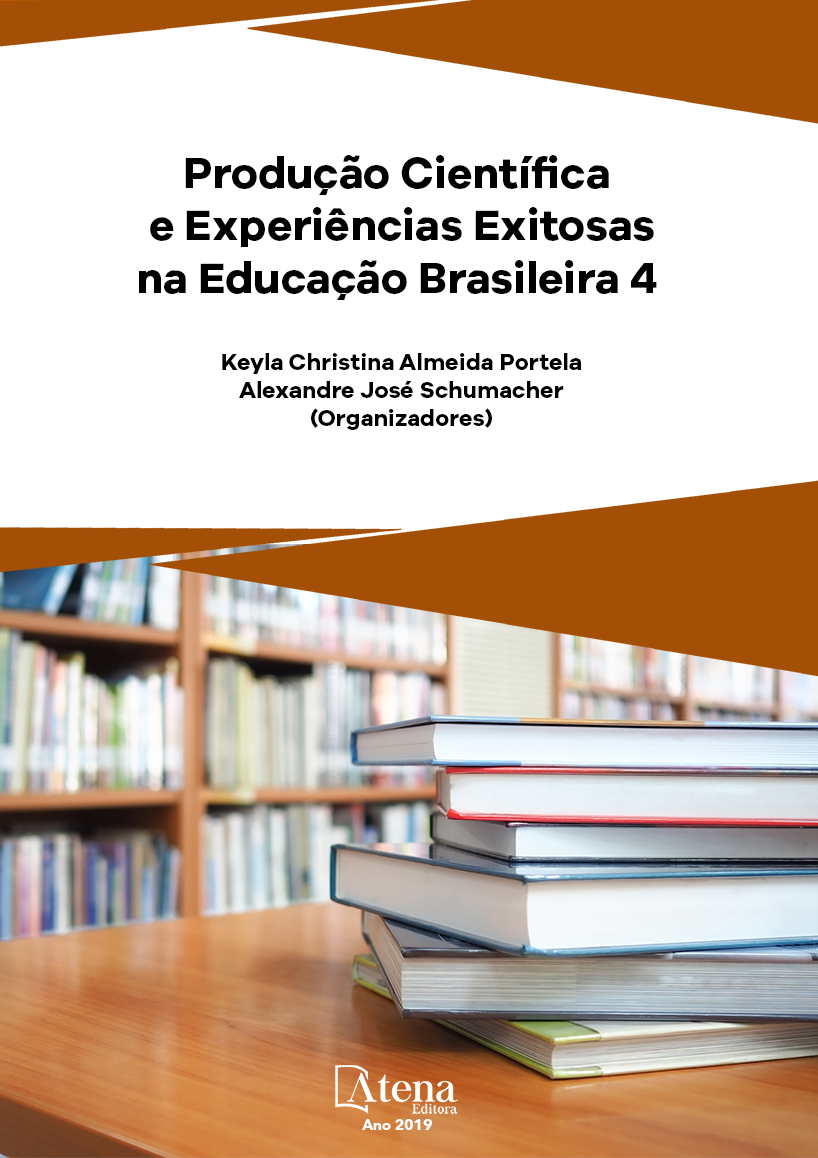
A MONITORIA COMO INSTRUMENTO FACILITADOR DO ENSINO-APRENDIZAGEM EM FISIOLOGIA HUMANA
A monitoria é uma estratégia de
ensino-aprendizagem que proporciona o
aprofundamento teórico e o desenvolvimento
de habilidades ligadas à docência, além
de estabelecer uma relação pedagógica
construtiva entre monitor e discente, por
incentivar a análise e discussão de conteúdos
abordados em sala de aula. Para avaliar o
papel dos recursos didáticos nesse processo,
o presente trabalho desenvolveu o estudo
de uma maquete sobre o sistema Reninaangiotensina-
aldosterona (SRAA). A maquete
foi confeccionada num quadro de isopor coberto
com feltro, ao qual foram fixados modelos, em
3D, de cérebro, rim e fígado, além de pequenas
faixas em feltro com os seguintes termos:
renina, angiotensinogênio, angiotensina 1,
angiotensina 2, ECA e aldosterona. Em posições
pré-estabelecidas, no início e final do SRAA,
foram fixadas as palavras ADH, vasoconstrição,
Na+, H2O e PA, para facilitar a interpretação do
funcionamento desse sistema. Adicionalmente,
foram elaborados um texto e um questionário
de 10 perguntas (pré e pós-teste), com o préteste
sendo respondido depois da aula teórica.
Após o estudo da maquete no laboratório com
auxílio dos monitores, envolvendo a leitura do
referido texto, seguida de sua montagem, os
alunos responderam o pós-teste para avaliar o
conhecimento adquirido. A análise das respostas
mostrou maior percentual de erros nos prétestes
- 142 (27%) de acertos e 378 (73%) de
erros - contra 417 (80%) acertos e 103 (20%) de
erros nos pós-testes, indicando que a maquete
inserida na prática da monitoria, atuou como
uma ferramenta positiva para o aprendizado do
aluno, podendo ser considerada um facilitador
do ensino.
A MONITORIA COMO INSTRUMENTO FACILITADOR DO ENSINO-APRENDIZAGEM EM FISIOLOGIA HUMANA
-
DOI: 10.22533/at.ed.5491921082
-
Palavras-chave: Monitoria, Fisiologia Humana, Ensino-aprendizagem, Recurso Didático.
-
Keywords: Monitoring, Human Physiology, Teaching, Learning, Didactic Resource.
-
Abstract:
Monitoring is a strategy that
provides theoretical deepening and development of teaching-related skills and also
establishes a constructive pedagogical relationship between monitor and student by
encouraging the analysis and discussion of contents addressed in class. To assess
the role of didactic resources in the learning process, this work developed the study
of a model on the Renin-angiotensin-aldosterone system (RAAS), using a styrofoam
board covered with felt, containing 3D models of a brain, kidney and liver, in addition
to small felted bands showing the following terms: renin, angiotensinogen, angiotensin
1, angiotensin 2, ACE and aldosterone. At the beginning and at the end of the RAAS,
the words ADH, vasoconstriction, Na+, H2O and PA were fixed to facilitate the students’
interpretation of the RAAS functioning. Furthermore, a text and a questionnaire of 10
questions (pre and post-test) were prepared, in which the pre-test was answered after
the theoretical class. Following the study of the model with the help of the monitors,
which involved the reading of the referred text and the assembly of the RAAS model,
the student answered the post-test to evaluate the acquired knowledge. The analysis
of the answers showed a higher percentage of errors in the pre-tests - 142 (27%) of
correct answers and 378 (73%) of errors - against 417 (80%) correct answers and
103 (20%), indicating that the model employed in the practice of the monitoring was
a useful tool for the learning process of the student, being able to be considered a
facilitator method of teaching.
-
Número de páginas: 15
- Emmanuel Veríssimo de Araújo
- Rachel Linka Beniz Gouveia
- Rita de Cassia da Silveira e Sa


